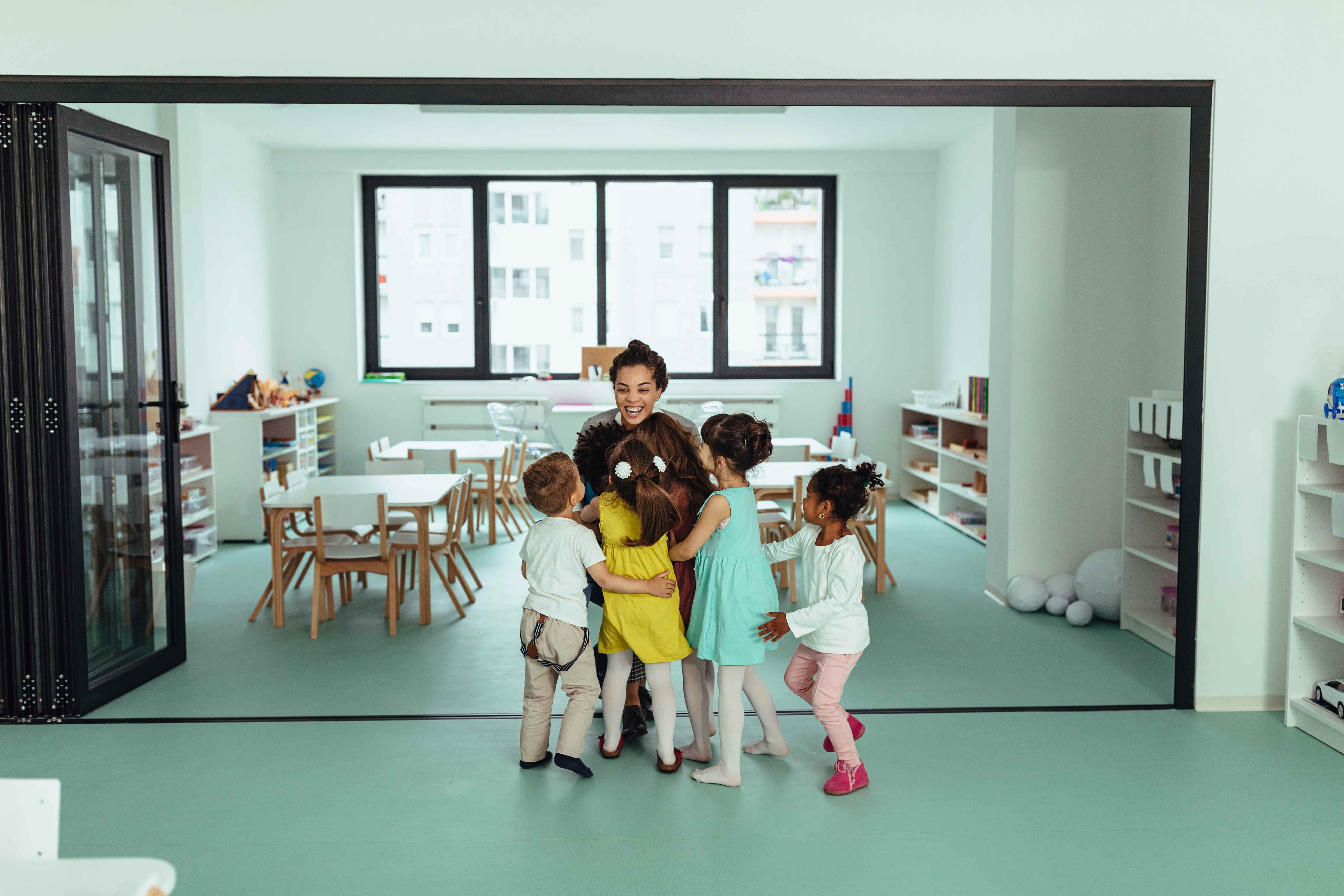Learn how sensory play supports young children’s focus, motor skills, language, and emotional regulation while creating joyful, hands-on learning moments.
For young children, learning doesn’t always look like sitting at a table or completing worksheets. Most of the time, it looks like hands covered in paint, fingers squishing dough, water dripping down sleeves, or little hands digging through rice, sand, or leaves. These simple, everyday moments are called sensory play and they’re the most meaningful learning experiences in early childhood.
Sensory play includes any activity that gives children the chance to explore through touch, sight, sound, smell, and movement. It might be blowing bubbles, pouring water between containers, running hands through coloured rice, kneading playdough, or collecting pinecones outside. What makes sensory play so powerful is how naturally it supports exploration, curiosity, and learning, all without children ever feeling like they are “working.”
Here are 10 reasons why sensory play matters and why it remains one of the most joyful and developmentally impactful ways for young children to learn.
1. Helps Children Focus & Stay Engaged
When children scoop, pour, mix, dig, or sort, they fall into a sense of calm concentration, bodies slow down and their minds settle. Sensory activities naturally slow down the world around them. These repetitive, predictable motions of pouring rice back and forth, squeezing sponges, rolling dough, help children stay present and tune into what their hands and bodies are doing.
These quiet moments of focus don’t have to be long to be meaningful. Even five to ten minutes of sensory play gives children a way to reset, especially after moments of excitement, frustration, or transition.
2. Strengthens Fine and Gross Motor Skills
Sensory play encourages children to use their hands in different ways like pinching, scooping, twisting, squeezing, stirring, pouring, stacking, and pressing. These simple actions build strength in small hand muscles, which later support writing, cutting, buttoning, and self-feeding.
When sensory play gets bigger, like carrying buckets of water outside, lifting a scoop of sand, or stretching slime, it also strengthens large muscles and helps children learn how their bodies move in space.
3. Sparks Curiosity & Creativity
Children are naturally drawn to anything that squishes, sparkles, pours, or crunches. Sensory play gives them the freedom to explore without a right or wrong answer. They can experiment, take risks, make predictions, and discover what happens when they try something new.
- A single sensory tray can turn into a “soup café.”
- Sand can become mountains, roads, or treasure islands.
- Water can become a science experiment or a quiet washing station.
Sensory play doesn’t need instructions, children build the story themselves.
4. Supports Emotional Regulation
Big emotions often feel overwhelming for young children. Sensory materials like playdough, sand, water, or slime offer a calming outlet where children can release tension and self-soothe. Soft textures, repetitive motions, and hands-on engagement help reduce frustration and restlessness.
For many children, a few minutes of squeezing dough, running hands through warm water, or watching sand fall is enough to reset their mood and help them return to play feeling grounded and ready.
5. Encourages Language & Communication
When children explore sensory materials, they naturally begin describing what they feel and see:
- “It’s sticky!”
- “It’s cold!”
- “More bubbles!”
- “It stretches!”
These moments are rich opportunities for language development. Families can support and extend vocabulary by asking open-ended questions such as:
- “What does it remind you of?”
- “How does it feel in your hands?”
- “What do you want to try next?”
Through sensory play, children learn new words, practice expressive language, and engage in shared storytelling.
6. Builds Problem-Solving Skills
Sensory play is full of little moments of discovery. Children pour too much water and try again. Their tower collapses, so they rebuild it differently. They notice that heavier objects sink and lighter ones float. They learn that only certain shapes fit into containers.
These moments foster patience, resilience, curiosity, and confidence, all through play.
7. Brings Nature Into Learning
Natural materials like leaves, shells, seeds, water, soil, snow, dirt, and pinecones add rich textures and new sensory experiences. These elements help children connect with the outdoor world and notice changes in seasons, weather, and plant life.
It’s a simple way for families to introduce children to seasonal changes, weather, plants, and outdoor environments.
8. Encourages Inclusive & Social Play
Sensory play is naturally inclusive. Children of different ages, abilities, and temperaments can all participate in the same activity at their own pace. One child might scoop, another might mix, another might pour and everyone is contributing in a way that feels right for them.
Shared sensory experiences encourage turn-taking, cooperation, and collaborative play without pressure.
9. Offers a Screen-Free Way to Explore
Sensory play draws children away from screens by engaging their hands, senses, and imagination. Whether it’s a sensory bin, a tray of ice cubes, or a mound of dough, the materials themselves provide enough intrigue to keep children engaged.
10. Creates Joyful Learning Moments
Sensory play is about joy. It brings giggles when bubbles overflow, pride when a tower finally stands tall, and wonder when slime stretches farther than expected. These joyful moments build confidence and remind children that learning can be playful, curious, and full of delight.
Final Thoughts
Sensory play doesn’t require fancy setups or expensive materials. It grows naturally from a child’s curiosity, creativity, and the simple joy of exploring the world with their hands. Whether they’re mixing, squishing, pouring, scooping, or discovering something new, sensory play helps children understand themselves, their environment, and how things work.
Stay in the know and check us out on social media! Follow BrightPath on Facebook and Instagram for a variety of fun activities and daily inspiration.







